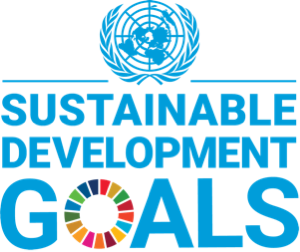Relationship between Real Effective Exchange Rate and Labor Productivity: Empirical Evidence
DOI:
https://doi.org/10.52812/msbd.18Keywords:
GDP, labor productivity, economy, High-income & Middle-high-income economy, Real Effective Exchange Rate, Correlation, RegressionAbstract
Labor productivity is one of the indicators that reveal a country’s economic development, human resource quality, availability of infrastructure and technology, among others. Improvement in organizational productivity is also dependent on labor productivity. The current study attempts to study the relationship between labor productivity and the Real Effective Exchange Rate in the selected countries. The sample included Australia, Brazil, Bulgaria, Canada, China, Iceland, Japan, Malaysia, South Africa, and the USA. With the aid of statistical techniques, the study found that productivity and exchange rate are correlated with varying degrees of strength and the nature of the relationship varies from country to country. The study concludes with important directions for future investigations.
References
Boghean, C., & State, M. (2015). The Relation between Foreign Direct Investments (FDI) and Labour Productivity in the European Union Countries. Procedia Economics and Finance, 32(15), 278–285. https://doi.org/10.1016/s2212-5671(15)01392-1
Campbell, K. (2012). Foreign Exchange Market. Encyclopedia of Business inToday's World. SAGE Publications https://doi.org/10.4135/9781412964289.n403
Choudhry, M. T. (2009). Determinants of Labor Productivity: An Empirical Investigation of Productivity Divergence. CiteSeerx. http://citeseerx.ist.psu.edu/viewdoc/summary?doi=10.1.1.614.8306
CIA. (2021). Chile. The World Factbook. https://www.cia.gov/the-world-factbook/countries/chile/#economy
Fedulova, I., Voronkova, O., Zhuravlev, P., & Gerasimova, E. (2019). Labor Productivity And Its Role In The Sustainable Development Of Economy : On The Example Of A Region. Entrepreneurship and Sustainability Issues, 7(2), 1059-1073,7 (2), 1059–1073. https://doi.org/10.9770/jesi.2019.7.2(19)
Firstcapital. (2013). Financial Year 2012-2013 –Australia's changing economy. Sydney: First Capital Financial Planning Pty Ltd. http://firstcapital.com.au/wp-content/uploads/2013/07/July-Snapshot-2013.pdf
Glen, S. (2021a). Correlation Coefficient: Simple Definition, Formula, Easy Calculation Steps. Statistics How To. https://www.statisticshowto.com/probability-and-statistics/correlation-coefficient-formula/
Glen, S. (2021b). Linear Regression: Simple Steps, Video. Find Equation, Coefficient, Slope. Statistics How To. https://www.statisticshowto.com/probability-and-statistics/regression-analysis/find-a-linear-regression-equation/
ILO. (n.d.). Labour productivity. International Labour Organization. Retrieved on April 23, 2021 from https://ilostat.ilo.org/topics/labour-productivity/
IMF. (2006). World Economic Outlook: Financial Systems and Economic Cycles. International Monetary Fund. http://imf-ieo.org/external/pubs/ft/reo/2009/apd/eng/areo1009.pdf
IMF. (2021). What is real effective exchange rate (REER)?. International Monetary Fund. https://datahelp.imf.org/knowledgebase/articles/537472-what-is-real-effective-exchange-rate-reer
Javed, S.A., Bo, Y., Tao, L., & Dong, W. (2021). The'Dual Circulatio' Development Model of China: Background and Insights. Rajagiri Management Journal. https://doi.org/10.1108/RAMJ-03-2021-0016
Jeanneney, S. G, & Hua, P. (2011). How does real exchange rate influence labour productivity in China? China Economic Review, 22(4), 628–645. https://doi.org/10.1016/j.chieco.2010.04.008
Morvillier, F. (2020). Do currency undervaluations affect the impact of inflation on growth?. Economic Modelling, 84, 275–292. https://doi.org/10.1016/j.econmod.2019.04.018O'Sullivan, A., & Sheffrin, S. M. (2003). Economics: Principles in action. New Jersey: Prentice Hall.
Ohanian, L. E. (2012). Aggregate hours worked in OECD countries: New measurement and implications for business cycles. Journal of Monetary Economics, 59(1), 40-56. https://doi.org/10.1016/j.jmoneco.2011.11.005
OWID. (2021). Productivity per hour worked. Our World in Data. https://ourworldindata.org/grapher/labor-productivity-per-hour-pennworldtable
Özkan, F. (2003). Denge Reel Kur Hesaplama Yöntemleri ve Reel Kur Dengesizliğinin Ölçülmesi: Türk Lirası Üzerine Bir Çalışma. Ankara: Türkiye Cumhuriyet Merkez Bankası. http://www3.tcmb.gov.tr/kutuphane/TURKCE/tezler/fundaozkan.pdf
Schwab, K. (2018). The Global Competitiveness Report 2018. Switzerland: World Economic Forum.
Sebastian, A., Sharma, U., Sonna, T., & Joshi, H. (2014). Impact of Real Exchange Rate Volatility on Use-Based Industrial Production in India. WPS(DEPR) 05/2014, Department of Economic and Policy Research, Reserve Bank of India. https://rbidocs.rbi.org.in/rdocs/Publications/PDFs/WP05150514F.PDF
SS. (2021). Pearson's Correlation Coefficient. Statistics Solutions. https://www.statisticssolutions.com/free-resources/directory-of-statistical-analyses/pearsons-correlation-coefficient/
UNCTAD. (2021). Beyond 20/20 WDS - Table view - Gross domestic product: GDP by type of expenditure, VA by kind of economic activity, total and shares, annual. Switzerland: United Nations Conference on Trade and Development. http://unctadstat.unctad.org/wds/TableViewer/tableView.aspx?ReportId=95
Worldbank. (2020). World Bank Country and Lending Groups. The World Bank. https://datahelpdesk.worldbank.org/knowledgebase/articles/906519
Worldbank. (2021). Real effective exchange rate index. The World Bank. https://data.worldbank.org/indicator/PX.REX.REER
Yousaf, U., Naqvi, F. N., Nasir, A., Bhutta, N. A., & Haider, A. (2011). Impact of foreign direct investment on economic growth of Pakistan. European Journal of Economics, Finance and Administrative Sciences, 4(32), 95–100. https://doi.org/10.21058/gjecs.2019.42004
.

Downloads
Published
How to Cite
Issue
Section
License
Copyright (c) 2021 Management Science and Business Decisions

This work is licensed under a Creative Commons Attribution-NonCommercial 4.0 International License.
Creative Commons Non Commercial CC BY-NC: The work is distributed under the terms of the Creative Commons Attribution-NonCommercial 4.0 License which permits non-commercial use, reproduction and distribution of the work without further permission provided the original work is properly attributed.











